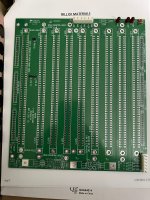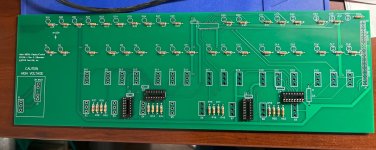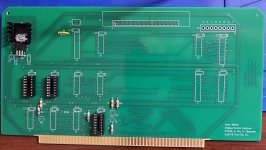troj
Experienced Member
Orders placed to Mouser, Digi-Key and Jameco for components for the Interface Boards. A couple components on Mike's BOM on https://deramp.com are out of production or on backorder, but I was able to find equivalents - fortunately, these were passive components.
Still need to order power supplies.
I also need to do some research to confirm my understanding that the minimum system to bring it up consists of the Interface Board, CPU Board and a RAM board of some sort.
-Kevin
Still need to order power supplies.
I also need to do some research to confirm my understanding that the minimum system to bring it up consists of the Interface Board, CPU Board and a RAM board of some sort.
-Kevin




